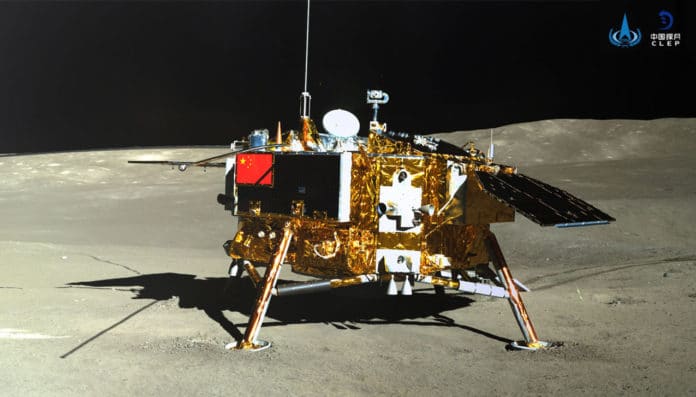Space radiation exposure is one of the significant risks for astronauts’ health. Long term exposure could cause late health effects such as the induction of cataract or degenerative diseases of the central nervous system or other organ systems.
The Moon is the next stepping stone for human space exploration. Human exploration of the Moon is associated with substantial risks to astronauts from space radiation. This consists of the chronic exposure to galactic cosmic rays and sporadic solar particle events on the Moon’s surface.
It appears that there have been no active measurements of the radiation dose rate on the surface of the Moon. In a new study, Chinese and German scientists report for the first time on time-resolved radiation measurements on the moon.
China’s lander- the “Lunar Lander Neutron and Dosimetry” (LND)- developed and built at Kiel University, on behalf of the Space Administration at the German Aerospace Center (DLR)- has taken the measurements of the so-called equivalent dose moon radiation levels.
The measurements show an equivalent dose rate of about 60 microsieverts per hour. In comparison, on a long-haul flight from Frankfurt to New York, it is about 5 to 10 times lower, and on the ground well over 200 times lower.
Robert Wimmer-Schweingruber from Kiel University, whose team developed and built the instrument, said, “Since astronauts would be on the moon for much longer than passengers flying to New York and back, this represents considerable exposure for humans.”
“We humans are not made to withstand space radiation. However, astronauts can and should shield themselves as far as possible during longer stays on the moon, for example, by covering their habitat with a thick layer of lunar soil.”
Co-author Christine Hellweg from the German Aerospace Center said, “During long-term stays on the moon, the astronauts’ risk of getting cancer and other diseases could thus be reduced.”
The measurements were taken during the lunar “daylight.” Like all other scientific equipment, the measurements switch off during the very cold and nearly two-week-long lunar night to conserve battery power.
Wimmer-Schweingruber said, “Since the moon has neither a protective magnetic field nor an atmosphere, the radiation field on the surface of the moon is similar to that in interplanetary space, apart from the shielding by the moon itself.”
“This is why the measurements taken by the LND will also be used to review and further develop models that can be used for future missions. For example, if a manned mission departs to Mars, the new findings enable us to estimate the anticipated radiation exposure in advance reliably. That’s why it is important that our detector also allows us to measure the composition of the radiation.”
Journal Reference:
- Shenyi Zhang et al. First measurements of the radiation dose on the lunar surface. DOI: 10.1126/sciadv.aaz1334
